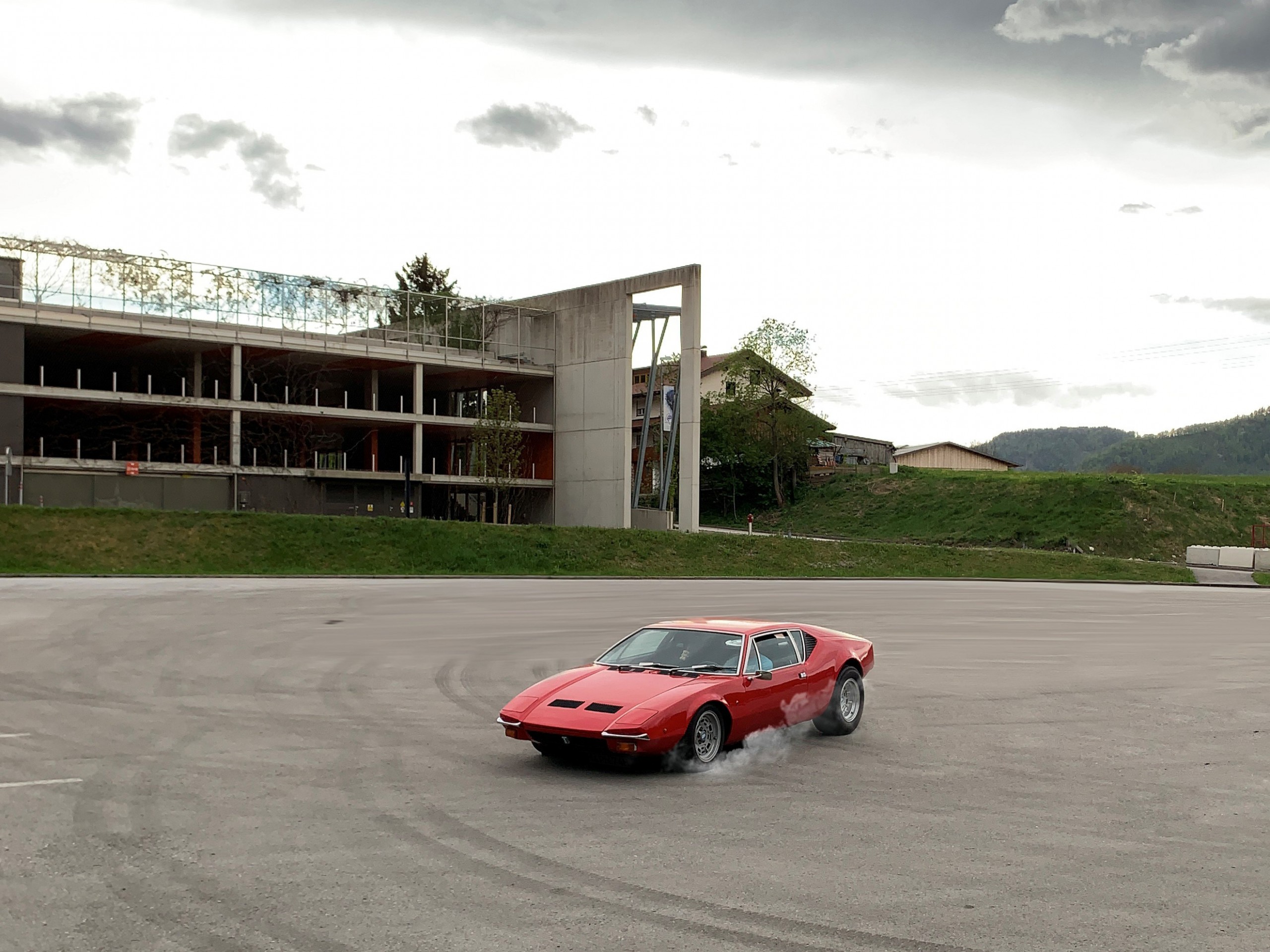Topics at the Allianz Center for Technology:
Oldtimer accidents

DeTomaso - Test of braking performance, picture: Andreas Kronthaler
August 2019
Owning and maintaining classic cars has always been an emotional hobby: the vehicles remind of old times and offer a highly individual driving experience. In addition classic cars are real eye-catchers - 42% of all Germans are happy when they see a vintage car.
According to the IfD Allensbach Oldtimer Study around 22% of all people in Germany (around 15 million) are interested in classic cars and motorcycles.
Today there are about 750.000 cars on our roads in Germany which are more than 30 years old and unfortunately are occasionally involved in accidents.
With that in mind, the AZT, together with other partners carried out an up-to-date analysis of KH and VK collision damage. In cooperation with the Graz University of Technology the structure of classic car accidents as well as the causes and consequences of accidents were analysed in detail. In this context a comparison of the brake delays for selected vintage cars and newer vehicles was carried out as a very useful addition to the activities of the analytically active expert.
The key finding of the study is that the incidence of accidents in vintage cars differs significantly from that of current vehicle generations. This is due in particular to different driving dynamics characteristics and the maintenance condition of the vehicles. For example, sudden vehicle damage was often observed as the cause of accidents in vintage cars. In addition, the use of classic cars - rarely as everyday vehicles, often as hobby and leisure vehicles - has an impact on accident typology. The brake deceleration measurements also show how clearly the performance of classic car brake systems is inferior to that of today's vehicle models. This also contributes to the typical accident occurrence of classic vehicles and must be taken into account by the vehicle expert in individual cases, e.g. in accident analysis and accident reconstruction.
The complete results of the study can be found in the following article (in german language only) which was published in the VKU.